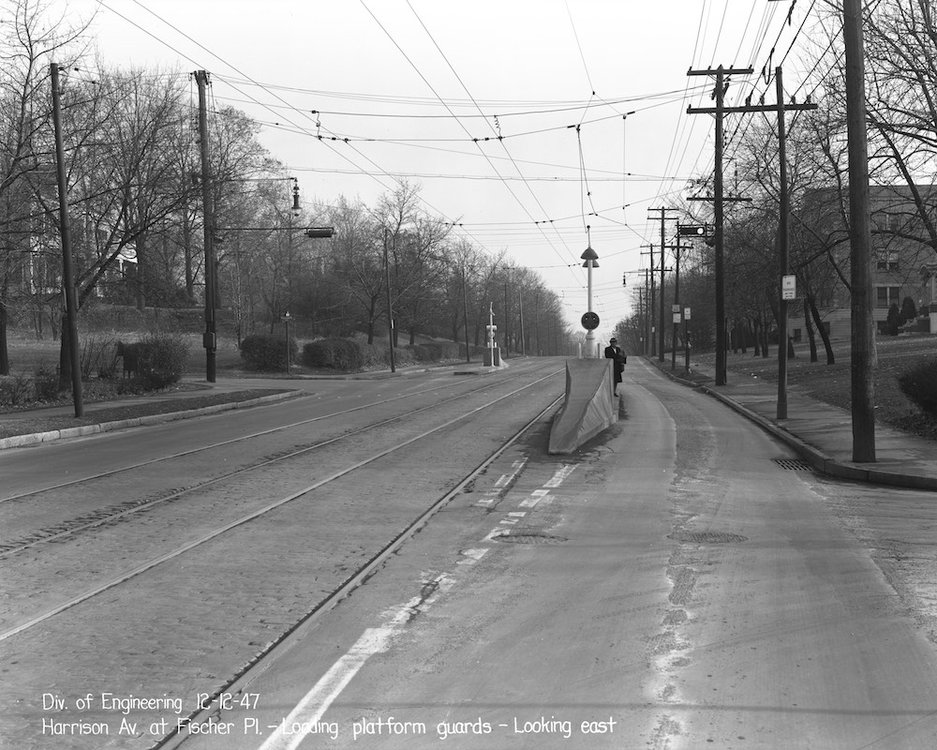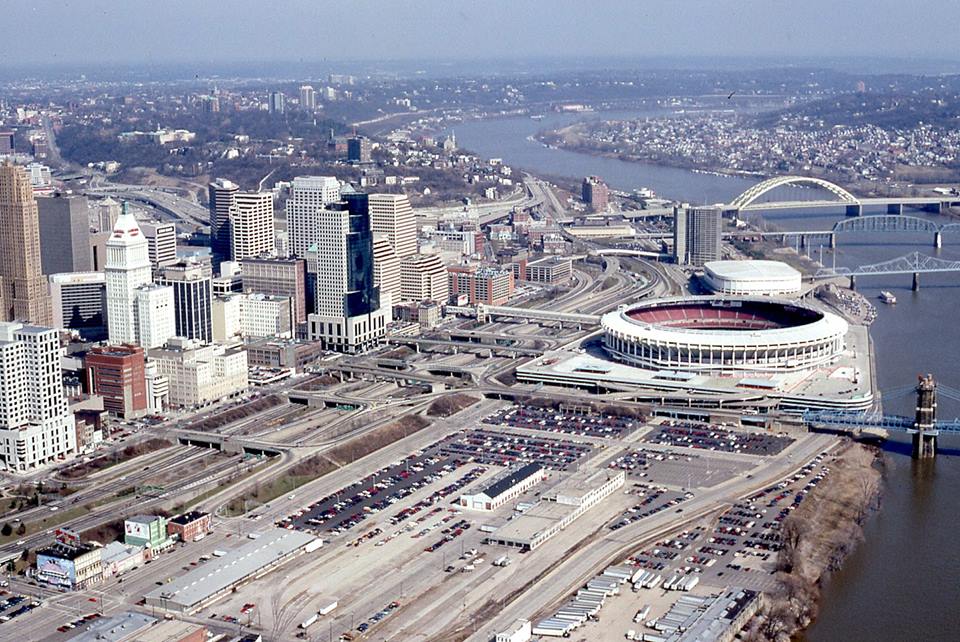Everything posted by jjakucyk
-
Cincinnati: Pleasant Ridge / Kennedy Heights: Development and News
Then just put the paint on the asphalt part with the concrete in between. In fact, that's already how they did it! https://goo.gl/maps/XgWwPYQds5K2 WTF?
-
Cincinnati: CUF / Corryville: Development and News
- Cincinnati: CUF / Corryville: Development and News
Because it's all still cheaper than living in the dorms.- Cincinnati: Downtown: Ingalls Building
As long as there's a solution to the single-stairwell problem. https://www.urbanohio.com/forum/index.php/topic,28833.msg718279.html#msg718279- The case against the skyscraper
It's important to ask which of these things is actually the cause versus the symptom. Aside from Manhattan and Chicago, skyscrapers (or even just high rises of any sort) didn't really become a thing until after zoning codes started locking down density everywhere but the center of the business district. The parking oceans are more a case of poor property tax policy that rewards depreciation and vacancy. Abandoned/empty buildings near downtown are also caused more by strict single-use zoning that's in conflict with what's in demand for that neighborhood. All that said, the downtown high rise does tend to function as a demand sink, but only because of the system that's been set up around it. If you need large floor plates or proximity to similarly sized businesses you don't really have any other choice.- Cincinnati: Interstate 75
I don't understand why so many people here seem to have an issue with the notion of "yield." It's really not that hard.- General: Complete Streets, Road Diets, and Traffic Calming
Along with the lack of policing of sidewalk parking is a similar lack of enforcement of rush hour restrictions. Woodburn Avenue in East Walnut Hills during the evening rush hour is particularly egregious, for example. Enforcement must be 100% for rush hour parking restrictions to work, since it only takes one illegally parked car to make that extra lane useless. So if they're not going to police it, there's no reason to bother in the first place.- General: Complete Streets, Road Diets, and Traffic Calming
I'm wary of chicanes as a traffic calming measure especially if they're just painted. On a low-speed street with actual curbs to channel traffic, ok, but otherwise people tend to just cut over the lines. Plus, Vine Street hill is curvy enough as it is, and I don't think making the geometry even more complicated would really help. Permanent parking and curb bump-outs at intersections are probably the simplest/safest thing to do.- General: Complete Streets, Road Diets, and Traffic Calming
There's potential yes. If you add a center turn lane, then you only have parking on one side of the street. That also means on the no-parking side buses still have to stop in traffic. Then you run the risk of motorists using the turn lane as a passing lane, which is also dangerous and illegal. Also, having buses pull over actually hurts bus service because they lose time having to merge back into traffic from a stop. Overall, is left turning traffic and/or bus stops on the hill really that big of a problem? Just a couple other notes, parking on sidewalks is happening all over the city. I don't think it's because of any actual risk, but because police aren't ticketing for it (heck, I don't think they're even ticketing for parking in front of fire hydrants). The lack of enforcement, plus low curbs, leads to lazy parking and feeds into motorists' sense of entitlement if not outright contempt for pedestrians. That said, Vine Street is only 36' wide from curb to curb in the hill, so there's not much room to play with. Second, the extra space at bus stops is actually a holdover from the streetcar days when there was a small concrete platform flanking the tracks. You see it on Riverside Drive a lot, along with newer full size turnouts to "get the buses out of the way."- Cincinnati: Random Development and News
Nothing about this looks particularly new urbanist to me. It's just large-scale suburban.- Cincinnati: Evolution and Changing Perceptions of Urban Neighborhoods
Much of the growth industry in those sunbelt cities is growth itself. They're growing because they're growing. Yeah it's something of a ponzi scheme, but since much of our economy is tied into the sprawl-building industry (whether building construction, road construction, mortgage financing, automobile sales, and all the accoutrements of inefficient and expensive suburban living) growth begets growth. That some of this is parlayed into urban development projects in those cities seems to be merely gravy for the most part. That still creates a much different dynamic than in a region where growth actually is zero-sum.- Cincinnati: Evolution and Changing Perceptions of Urban Neighborhoods
Well, so is "take your academic mumbo jumbo elsewhere." Double standard much?- Contesting Valuation of Real Property - Hamilton County - OTR
In a broader sense, I see this as being a good thing. Land values close to the core of the city should be higher due to desirability, presence of utilities, services, etc. In the same vein, it should be harder to vacate such property (either literally or by turning it into parking) in order to reduce tax burdens because the city still has to maintain the same amount of infrastructure to serve that property, essentially shifting the burden to others. Taxing the land in higher proportion than the improvements encourages development and discourages speculation. Of course, simply reallocating the value of improvements into the land in order to water down an abatement is super shady. If this is being done on a property by property basis that's bad, but if overall values for a whole neighborhood are shifting then that may just be the new normal.- Cincinnati: Over-the-Rhine: Development and News
So Michael Moore resigned?- Cincinnati: Downtown: 1010 On The Rhine / Downtown Kroger
The Hanke building has a direct entrance from the A&D garage, however due to agreements with the courthouse, Job & Family Services, and county administration, it's very hard to get in. Daily parking is used up by 8:30 am at the latest and it doesn't usually free up until after lunch, plus monthly slots are next to impossible to obtain. The real crime is that it's a complete ghost town after 5:00 pm, and the sea of ugly parking lots between Sycamore and Broadway kill the connection between OTR proper and Pendleton. I wouldn't necessarily be opposed to losing Davis for a singular building, though I think an easier sell would be a 7+ story block facing Central Parkway and something just a bit smaller behind. Even Emory doesn't go all the way to 12th.- Cincinnati: Union Terminal
Union Terminal was designed to accommodate the 100 series cars from 1928. They were 44'-7 3/8" long and 8'-3 1/2" wide. By this time the width had crept up a bit from closer to 8' at the beginning of the century, though 44' was a pretty standard length until the PCC cars of the late 1930s that were 46' long and 8'-4" wide. Cincinnati's wide gauge track allowed for decent car widths, but the tight turns and narrow "devil strips" (the space between tracks going in opposite directions) of only 3'-6" instead of the usual 4' tended to keep lengths down since long cars would swing wide at curves and could cause a collision when two cars tried to pass. Interurbans generally wanted cars at least 9' wide and anywhere from 50' to 60' long, but ones that operated over the Cincinnati Street Railway to reach downtown had to stay pretty close to the streetcar dimensions (Cincinnati, Milford & Loveland cars of the era were 8'-6" wide but only 40' long).- Cincinnati: Northside: Development and News
I don't know that having only an exit to a street is that big a deal, though it does complicate the bike lanes. I think the city might be wary of closing it off completely because they'd need to do a cul-de-sac or a hammerhead or something to allow a proper turnaround, which there isn't really room for. Since Elmore was made 2-way, there's less of a need to get vehicles from the Ludlow Viaduct to Dooley Bypass for anyone going towards Camp Washington or South Cumminsville. Since Old Ludlow is pretty wide, I'd be an advocate for using some of that space for a proper cycle track connecting to the Mill Creek Greenway Trail, since there's a stop light at Dooley already.- Cincinnati: West End: TQL Stadium
- Cincinnati: West End: TQL Stadium
- Cincinnati: Northside: Development and News
If non motorist safety was a priority, then this would be a one-lane roundabout, something like so (note I am not a traffic engineer, and it's a little messy in places, but this should be the goal).- Cincinnati: Northside: Development and News
I was just about to post that exact reference. This is absurd. The only reasoning I can think of that it's so large is to get the approach roads to work with the tight angles, but still.- Cincinnati: West End: TQL Stadium
- Cincinnati: West End: TQL Stadium
- Generic Infill Architecture
^ That's nice. What do you mean by "real brick instead of veneer" though? Brick veneer is still real brick. In fact, pretty much all brick used on buildings are still made of fired clay like they were hundreds of years ago. We just have better methods of compressing and firing them to make them stronger and harder. Concrete is really only used for the larger 8" x 16" blocks or for paving. Anyway, there's basically three ways it can be done: 1. Traditional load-bearing masonry. Prior to about the middle of the 20th century, brick (and stone) buildings used load-bearing masonry where the walls supported the structure. That means brick walls had to be at least two brick depths (wythes) thick, or about eight inches total at an absolute minimum. Usually they'd be three or more wythes thick, and for brick highrises like the Mondanock building in Chicago the walls are six feet thick at the ground floor. This isn't done anymore because it has no ability to resist lateral forces such as from earthquakes, and you have to build another wall inside if you want any insulation. Plus there's the sheer amount of weight and number of bricks required for any building of appreciable height that also complicates the foundation and footings. 2. Masonry veneer. This has existed since at least the 1920s, but it became much more common mid-century on. The bricks themselves are basically the same as in traditional load-bearing masonry. The difference is there's only one wythe, and the brick carries no load. The wall behind does, whether that's concrete block with reinforcing, wood framing, or steel. The bricks sit on ledges to hold their weight, and they're held to the structural wall behind with clips that are embedded in the mortar joints at regular intervals to resist lateral loads. Rustic fieldstone walls can be done this way too, though those are usually at least six inches deep rather than four, and heavier ties are required. 3. Thin cladding. I think this is what you're referring to. It's still the same brick material as traditional load-bearing brick or veneer, except it's only about an inch thick instead of the usual four. The individual bricks are applied to the wall with a thinset mortar like tiles. This is sometimes called lick 'n' stick. If detailed properly it can look just like any other brick wall, but those corner pieces are where a lot of the expense is, as well as detailing the substrate material to give the thickness necessary without also creating a leaking problem. This is more often used for that really thin mortarless stone that you see all over suburban shopping centers suburban houses post-2000. Cast stone has existed since about the 19th century, and it's basically precast concrete with special aggregate and coloring to make it look like quarried stone (usually similar to Indiana limestone), but it's impractical and expensive for bricks and is usually limited to shaped ornamental details. An advantage to cast stone is consistent color, sizing, and customizability compared to natural stone. I don't think it's practical for thin cladding applications however, and being cementitious it expands and contracts more than regular masonry, requiring joint reinforcement or separation planes. There's other manmade materials out there such as calcium silicate masonry, which is formed like brick but uses lime rather than clay as its main binder, and it's autoclaved to cure it into basically a manmade limestone. This can be made in "full bed" (six inch) thicknesses or thin cladding, with many of the same benefits as cast stone while also having more compatible expansion and contraction coefficients. Both of these materials tend to be used more in larger institutional type projects because they have relatively large setup costs due to the nature of their manufacturing that don't pencil out well for smaller jobs.- Cincinnati: West End: TQL Stadium
- Cincinnati: CUF / Corryville: Development and News






